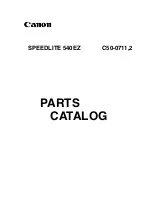
White Balance
19
White Balance
The camera uses an electronic white balance process to calibrate the picture and produce accurate colors
under different lighting conditions. There are 4 methods of setting the white balance.
Auto white balance (AWB): The camera automatically adjusts the white balance to the optimal level.
Custom white balance: You can use a gray card or white object with no pattern to establish the white balance
and save it to one of two custom white balance settings, [WB-A] or [WB-B]. When shooting under fluorescent
lights, we recommend setting the custom white balance.
Preset white balance: Set the white balance to [Tung] (tungsten lighting) or [Dylt] (daylight). Preset white
balance settings can be further fine-tuned within a range of -9 to +9.
Select color temperature: Set the while balance to [Kelv] (Kelvin) to select a color temperature between 2,000
K and 15,000 K (in 100 K increments).
NOTES
• The [Custom Picture]
>
[Fine Tuning]
>
[White Balance] settings in the custom picture file (
A
precedence over the white balance set with these procedures.
• You can use the [Camera Setup]
>
[Shockless WB] setting to make the transition look smoother when you
change the white balance settings.
• When an optional RC-V100 Remote Controller is connected to the camera, you can adjust the white
balance with the remote controller’s AWB button, A button, B button, PRESET button and
Å
button.
• The color temperatures displayed on the screen are approximate. Use them only as a reference.
Auto White Balance (AWB)
The camera constantly adjusts the white balance automatically to achieve an optimal level. The camera will
adjust the white balance if the light source changes.
1 Press SET.
• One of the adjustable settings will be highlighted in orange on the screen.
2 Push the joystick left/right to select the current white balance setting.
3 Push the joystick up/down to select [AWB] and then press SET.
• The white balance will be adjusted automatically.
NOTES
• Custom white balance may provide better results in the following cases:
- Changing lighting conditions
- Close-ups
- Subjects in a single color (sky, sea or forest)
- Under mercury lamps and certain types of fluorescent and LED lights
Содержание ME20F-SHN
Страница 44: ...BIE 7223 000 CANON INC 2017...
















































